5. Begotten (E. Elias Merhige, 1990)
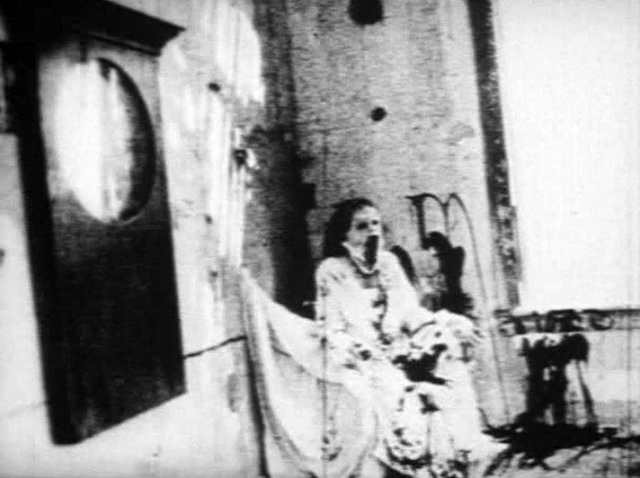
There’s not much to say about Mehrige’s 1990 film concerning its themes other than the fact that it’s a surreal, dystopian film which revolves around the idea of the death and the rebirth of gods. A “God” (Brian Salzberg) is seen killing himself in the opening scene and “Mother Earth” (Donna Dempsey) emerges from this act who then gives birth to the “Son of Earth” (Steven Charles Barry) using the semen of the God’s body. The Son of Earth then encounters a group of nomads to whom he offers the weird “things” he vomits, but the group ultimately have him burnt and dismembered as well as Mother Earth.
“Begotten” is the haunting, horror version of Genesis that many would find upsetting. A visually stunning film with its nightmarish black-and-white shots, dystopian landscapes, and creepy figures and eerie sounds.
It is generally considered as disturbing – and it really is in the most original of ways – but “Begotten” is so much more than an experimental disturbing point of reference. The film’s got an alien atmosphere and its gory tale is told in such a dark yet poetic way, a masterpiece beautiful in its ugliness that isn’t like anything you have seen.
4. Tetsuo, the Iron Man (Shinya Tsukamoto, 1989)
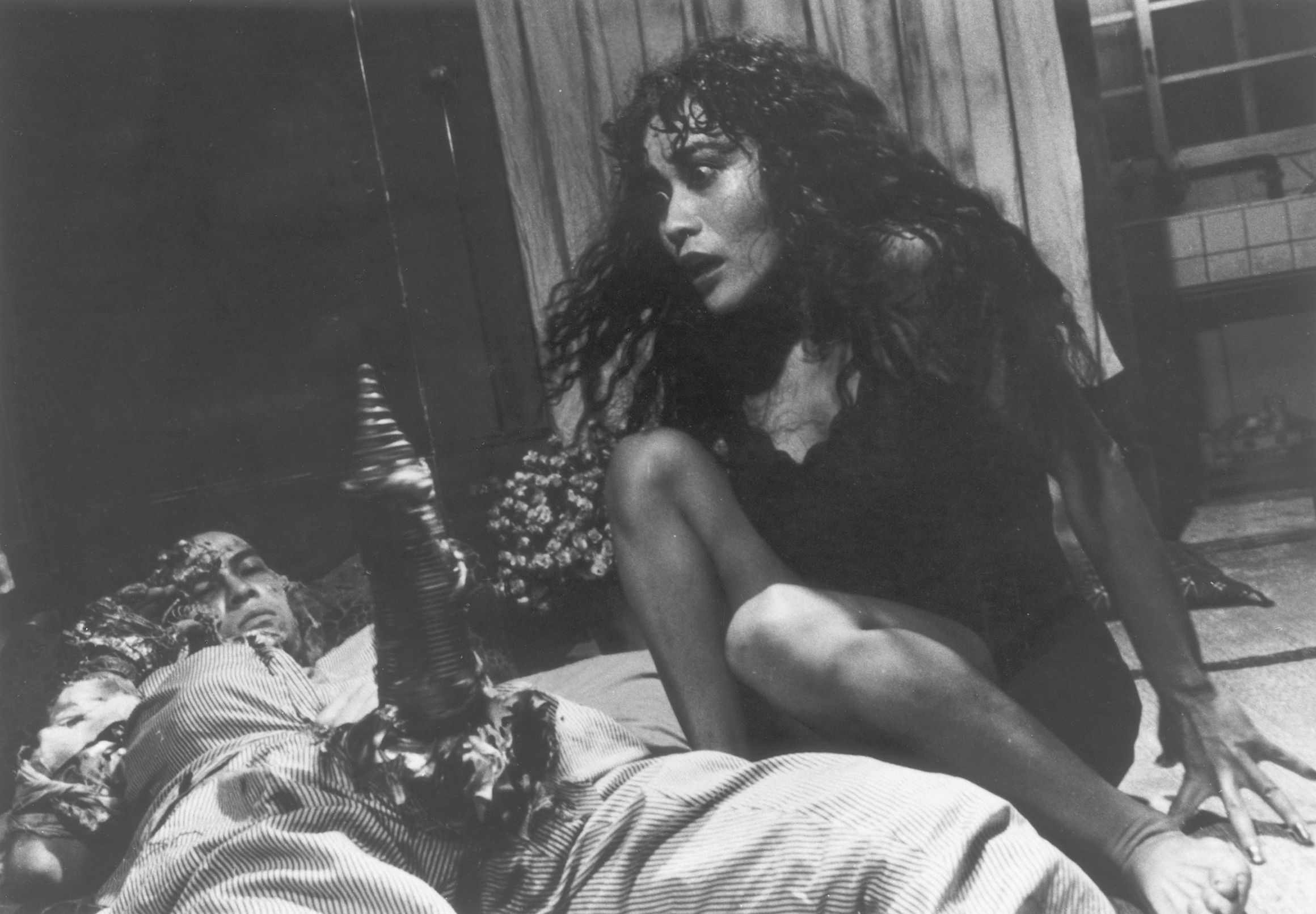
The main character in Shinya Tsukamoto’s black-and-white cult classic is a salaryman (Tomorowo Taguchi) who, together with his girlfriend (Kei Fujiwara), hit the “Metal Fetishist” with their car and then dump him. The Metal Fetishist gets revenge on the man by having him transformed into metal. In a stage process from within his body, he starts to “grow” metal skin parts until his body members turn into metallic ones, almost transforming him into a machine.
A nightmarish science fiction film, “Tetsuo, the Iron Man” is a dingy allegory on the so-called “post-industrial” world and man’s love/hate relationship with technology, a relationship where the boundaries can very relevantly be set, and the subsequent anxiety and horror this can cause.
Industrial music, gory black-and-white images that are extraordinary visually, and amazing stop-motion effects create an hour of a unique watching experience where you get succumbed by the film’s frantic rhythm. It is almost unsimilar to anything else, a mind-blowing avant-garde masterpiece which established Tsukamoto as an iconic cult director for good reason.
3. Angst (Gerald Kargl, 1983)
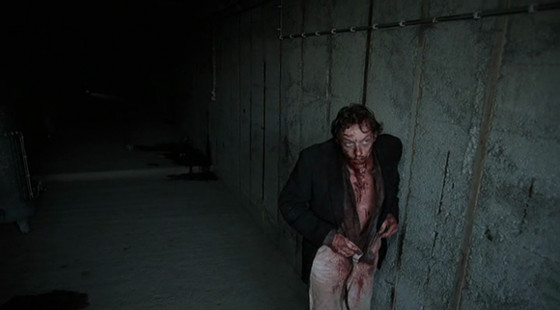
A psychopathic serial killer (Erwin Leder), who’s been recently released from prison, wanders around looking for his next victims. He breaks into a house where he finds a physically and mentally impaired man in a wheelchair who thinks he’s his father. Then the man’s mother and sister arrive. He attacks, tortures and eventually kills the family. What excites him so much in killing is fear, seeing the fear in his victims’ eyes caused by him.
Gerald Kargl’s “Angst,” which is the only feature he ever made, is partly based on the true story of serial killer Werner Kniesek. The film is definitely an intense cinematic experience. The lead actor’s performance is perfect. He is a disturbed and perverted character but with an inkling of an oversensitive quality, which might have been the reason this man turned out the way he did.
In his childhood, he constantly felt fear, as he recalls. He couldn’t bear it. His defense is his offence. And people always function in systems where everyone has a role in order for the system’s balance to be maintained. He needs to see fear in others – and the fear for one’s life is the ultimate form of that feeling – so he secures for himself the role that remains – that of not being afraid.
The violence in this film was considered extreme, resulting in it even being banned from theatres worldwide upon its release. It’s brutal, raw and breathtaking. The way the camera moves and the rhythm that it creates together with the voiceover with the man’s thoughts really captures you inside his paranoid head in a way that is almost suffocating and genuinely shocking.
2. The Beast (Walerian Borowczyk, 1975)
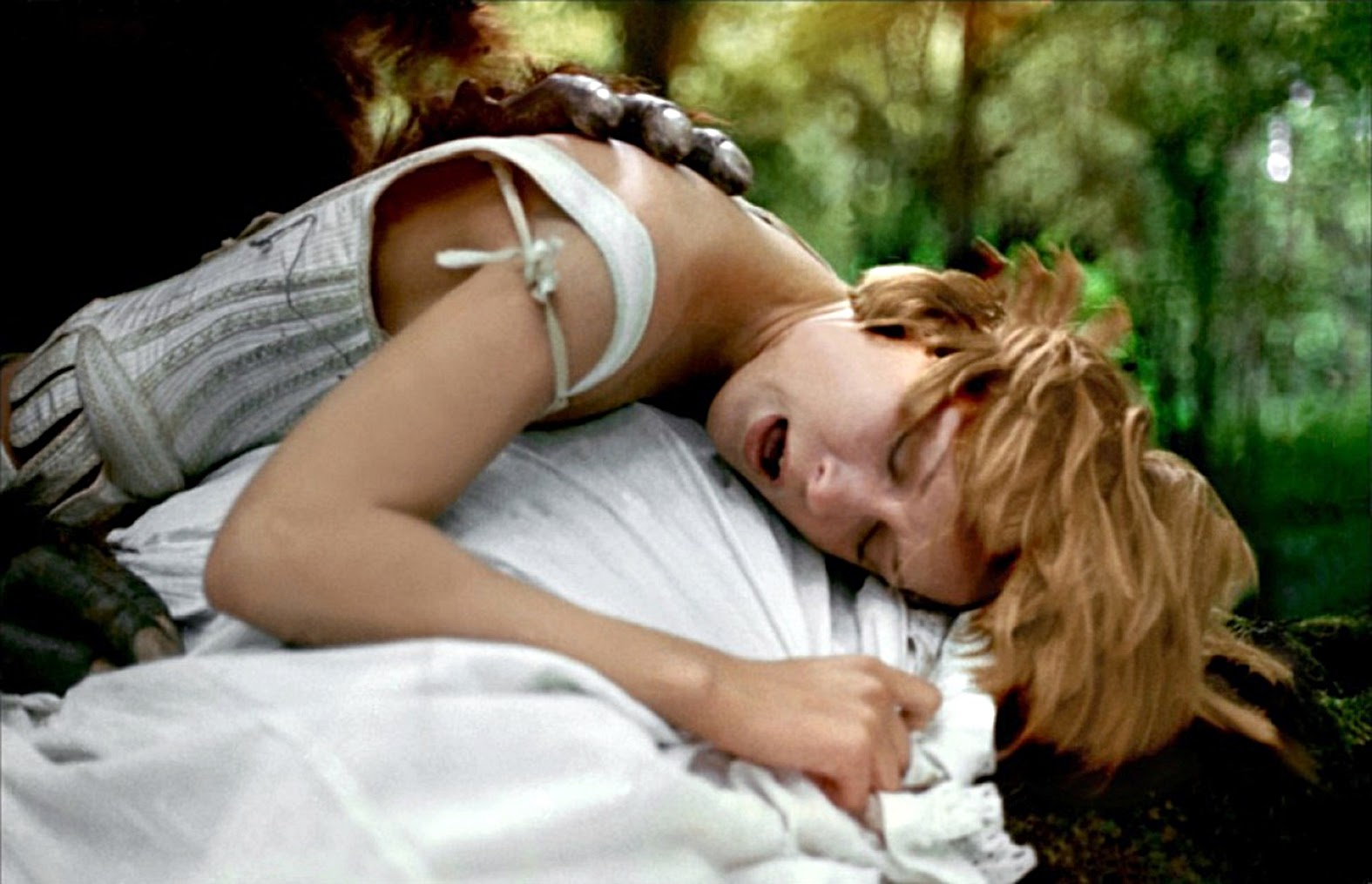
When Lucy’s (Lisbeth Hummel) businessman father dies, she is to marry a man she has never met named Mathurin (Pierre Benedetti), the son of a prominent horse breeder, as a condition in order to inherit her father’s mansion. Mathurin is a rough, deformed odd man, traits by which not only is Lucy (unlike the rest) put off, but which ultimately seems to excite her excessively. Her dreams and fantasies are ultimately intertwined with reality.
Loosely based on Prosper Mérimée’s novella “Lokis.” Following his controversial almost pornographic “Immoral Tales,” Walerian Borowczyk makes “The Beast” (the original idea for which was to be included actually as a segment in “Immoral Tales,” but eventually made its way into a feature), depicting a sexual relationship between a woman and a beast, and manages to, yet again, exceed himself in creating another genuine film filled with obscure eroticism and absolutely shocking the world.
Exuberant and annoying at a level of perfect balancing between art and pornography, this film is proof of the alluring power of contrasts, like nuisance, stimulation, and horror, and that the Polish filmmaker is a master of his kind, or a remarkable kind of his own.
1. Strange Circus (Sion Sono, 2005)
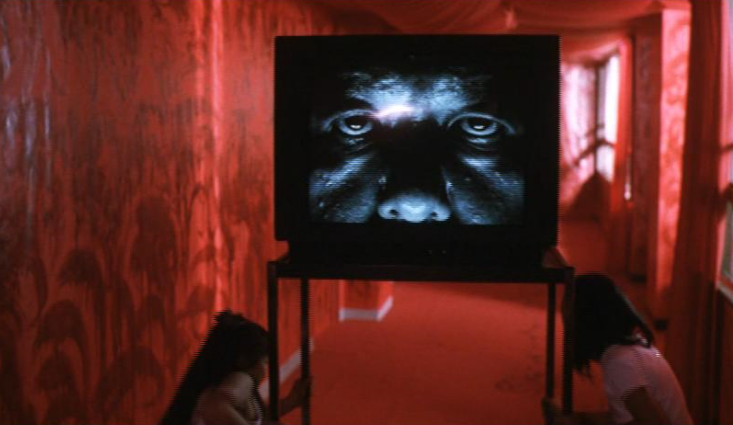
Mitsuko (Rie Kuwana, Mai Takahashi) is a young girl who is sexually abused by her father Gozo (Hiroshi Ohguchi) and physically and psychologically abused by her mother Sayuri (Masumi Miyazaki). Taeko (also Masumi Miyazaki) is an eccentric novelist in a wheelchair, with a lot of secrets.
All the above are fiction, part of the novel she is currently writing. Or perhaps not. It looks like there’s something autobiographical about Taeko’s novel, as if she’s telling her own story. Or perhaps not. Yûji (Issei Ishida) is Taeko’s new assistant, a peculiar figure of indistinguishable feelings and reactions, who is determined to find the truth behind Taeko’s stories. Or perhaps not?
Sion Sono’s film could be described as a twisted tale of revenge with dark psychoanalytic references in a way, a dark family drama where things get seriously derailed. Or just a story of pain. There is incest, abuse, disgust, horror, a creepy cello case, and some gore scenes, which are as powerful and raw as violence is in the Asian and in Sion Sono’s cinema in particular, which would definitely make somebody go What The Fuck.
But perhaps the most shocking thing about “Strange Circus,” and what really makes it exceptional at the same time, is that it tells the story of a psychologically amputated child, whose soul was torn to pieces so much it couldn’t be repaired anymore and therefore got left with the only choice of amputating others, too. And ultimately, that is a deeply sentimental story being told, which makes you think “WTF did I just watch” after the movie is over.